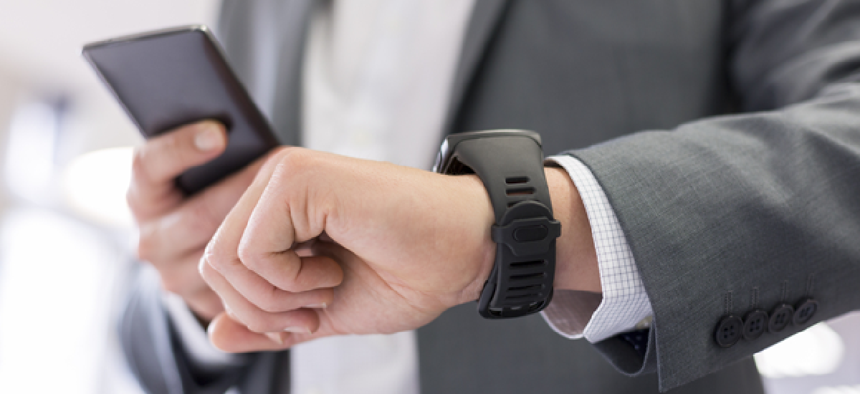Closing the gap between mobile and wearable


Connecting state and local government leaders
The use of mobile technology in field work shows how the stage is being set for wearables in government.
In today’s workforce, mobile technology, big data and the cloud are changing the way we collaborate with each other – and the way we access both business applications and enterprise data. Private industry is making strides at integrating mobile devices – from tablets to wearables – into business processes. In government, however, there remains a real gap between enterprise systems and the day-to-day use of technology.
That gap has to close. Mobile technology can provide access to enterprise data and foster collaboration across agencies, whether at the federal or state level or with commercial users providing contract support to those organizations.
Practical examples of field work show how the stage is being set for wearables and mobility in government.
Emergency deployment and management: Crawford & Company is a provider of claims management solutions to insurance companies. It coordinates insurance claims adjusters who mobilize at disaster locations. These adjusters visit the affected areas with their own mobile devices, perform assessments and tie in to enterprise systems – seamlessly and without training.
In law enforcement and emergency response, wearable technology is just beginning to be used, with body cameras on police officers. The video can be used and shared in investigative case management, as well as in data collection when preparing case histories or other file information.
Energy. EDP Renewables, a leading provider of wind energy, uses mobile technology extensively in scheduling wind turbine repair. The company prioritizes turbine repair based on a complex algorithm of energy prices and dynamic weather patterns and communicates that information to its field workers.
With a mobile solution already in place, the company could integrate its current system with Google Glass, for hands-free work that would enable employees to better collaborate and gather information. This approach would move the company’s mobile solution from a simple workload management tool to one in which maintenance can have a direct impact on profitability.
This type of collaborative, mobile-enabled decision making can also benefit the government, particularly for Department of Defense repairs, where it is essential to maintain large groups of fleet vehicles in an optimal state of readiness.
Health care. Government health care is moving toward a more consumer-driven model. Payers are engaging more with patients to make health care less expensive. Integration of enterprise processes with consumer wearable technology (such as Fitbit, for example) allows data to be pulled from these instruments, offering feedback and reporting on improvements in health and wellness.
This trend has interesting applications for veterans’ health care and wounded warrior rehabilitation as well as for general health care management. In this instance, wearable technology could be a useful tool in tracking the well-being of users and providing information back to the agencies that support them. Data can be interpreted with business process management software, sending care or treatment reminders to users wearing an Apple Watch or other mobile device.
The way in which we use technology as consumers needs to be the model for the way in which technology is being used in government, both behind the firewall and out in the field.
Government has been slow to fully embrace mobile because of security concerns, and that’s understandable. As with all emerging technology, security for mobile devices and wearables in government is paramount. Additionally, the need to secure personal data highlights a secondary requirement for a robust and instantaneous security perimeter that can be updated when new technology comes onto the scene. Agencies must have a policy in place that can adjust on the fly to new security risks and profiles.
That said, the argument for wearables and other mobile computing in government is persuasive. The technology makes it easier for local, state and federal agencies to collaborate. It’s essential for disaster response – or in fact for any situation that demands communication across channels and agencies. That, in turn, calls for native mobility for enterprise applications, so that users of all devices can collaborate and access data (based on permissions and security) no matter where they may be around the globe.
By closing the mobility gap in government, we can improve the user experience for employees and taxpayers alike.
NEXT STORY: Air Force seeks virtual training




